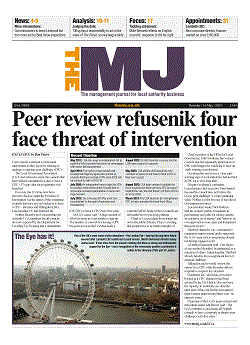The pre-election period is often referred to as ‘purdah’, although many councils are dropping that term now given its origins. Beginning toward the end of March, and for me – like the weather – it has a similarly unpredictable feeling about it in this, the most capricious of months.
You might think it is a time when council communicators can rest a little easier. No. It is the period when we need to think harder than ever about our business, second-guessing whether a piece of ‘publicity’ – I’ll come on to the significance of that term – is allowable under the guidance.
This is the Local Authority Publicity Code (2011), the touchstone document for what is and isn’t allowable within the pre-election period which has statutory force under the Local Government Act 1986 (https://www.gov.uk/government/publications/recommended-code-of-practice-for-local-authority-publicity).
Unpicking some of the elements people feel are most confusing or unclear about the code, firstly, the Act defines publicity as ‘any communication in whatever form, addressed to the public at large or a section of the public’. The code therefore applies in relation to all decisions by local authorities relating to paid advertising and leaflet campaigns, publication of free newspapers and newssheets and maintenance of websites – including the hosting of material which is created by third parties.
When Paul Rowsell of the Department for Levelling Up, Housing and Communities wrote the guidance, social media had already started to take root as a key communications channel for councils. Although it isn’t specifically mentioned, it is most definitely covered in the wider definition of publicity.
The code applies seven principles and states that publicity by local authorities should be lawful, cost-effective, objective, even-handed, appropriate, have regard to equality and diversity and be issued with care during periods of heightened sensitivity. It is this final principle which is key in any election period.
The code states: ‘…During the period between the notice of an election and the election itself, local authorities should not publish any publicity on controversial issues or report views or proposals in such a way that identifies them with any individual members or groups of members.’
All well and good and, I think, pretty-well understood. Considering what is or is not controversial here is largely a matter of common sense. You can apply a simple social media test – is this likely to get people worked up or provoke a Twitter storm or similar social media moments? This is a useful approach which errs on the side of caution, given the propensity of some channels to fan the flames.
The code also effectively bars any reference to ‘individuals involved in elections’ – which covers candidates – stating ‘…Publicity relating to individuals involved directly in the election should not be published by local authorities during this period unless expressly authorised by or under statute.’
This is a trickier element to interpret than may initially seem to be the case.
For instance, many councils – mine, Essex CC, among them – will ‘drop down’ our website news section, and disable the search function for those pages, so that any content quoting cabinet members cannot be accessed.
This is straightforward if it is your own election, but in two-tier areas, there is also the consideration of what a council does when the other tier council in its area has elections – which can be every year in areas where elections happen in thirds.
This means we are at the point in the year where we are looking at how many of our cabinet and members may stand at district, borough or city level, and how we interpret the guidance as a result. This might mean fine-tooth-combing a website and social media channels for any content featuring them.
The guidance also refers to referendums, alongside elections, but is a key area where councils need to be cautious. Again, the chief element is avoiding launching any activity which is in any way controversial or could be seen as seeking to influence voters.
You can, of course, publish information relating to the election or referendum, including factual details about who is standing, for whom, and where.
One element, however, which still seems to sometimes confuse colleagues is consultations.
On several occasions, I have been approached about scheduling a potentially controversial consultation a little too close to the pre-election period for comfort. The advice here is to wait. Start it after the first week in May and there will be no problem.
What are the main take-aways for communicators from the guidance? Here are my top three:
1)–Publicity will be limited during any pre-election period, but the business of the council goes on, and information and news still needs to be communicated. The question to ask is, ‘Why can’t/shouldn’t this happen?’ The code is useful in getting to good judgments here.
2)–Read any proposed consultative activity and associated publicity (in particular) around or in the pre-election period through the lens of a candidate. If it could be an election issue, it is probably a good idea to wait.
3)–Reach out and work with teams and departments and offer your council’s interpretation of the guidance. There is usually someone who hasn’t factored the pre-election period into their planning – especially if your council doesn’t have elections, but you are in a two-tier area with other councils that do.
Finally, remember that the code applies to the council and the use of its resources. Members who are not using council resources can generate their own publicity, subject to the code of conduct and the rules about election expenses.
Andy Allsopp is head of profession, communications and marketing, Essex CC, and joint chair of LGcomms
@LGcomms

